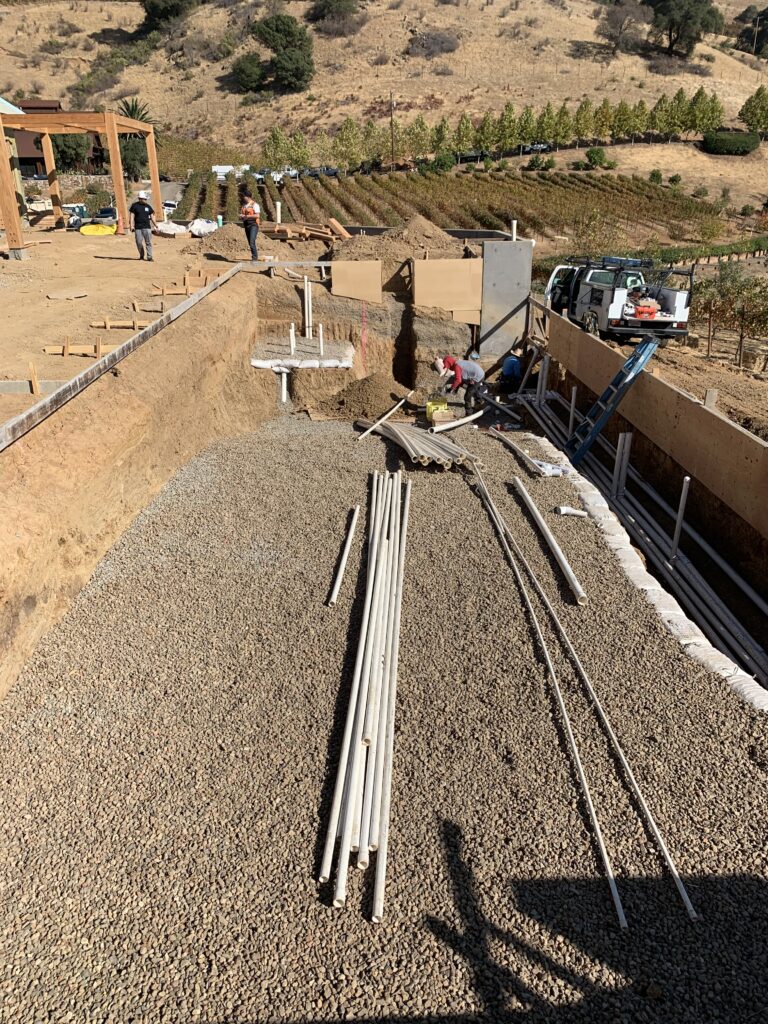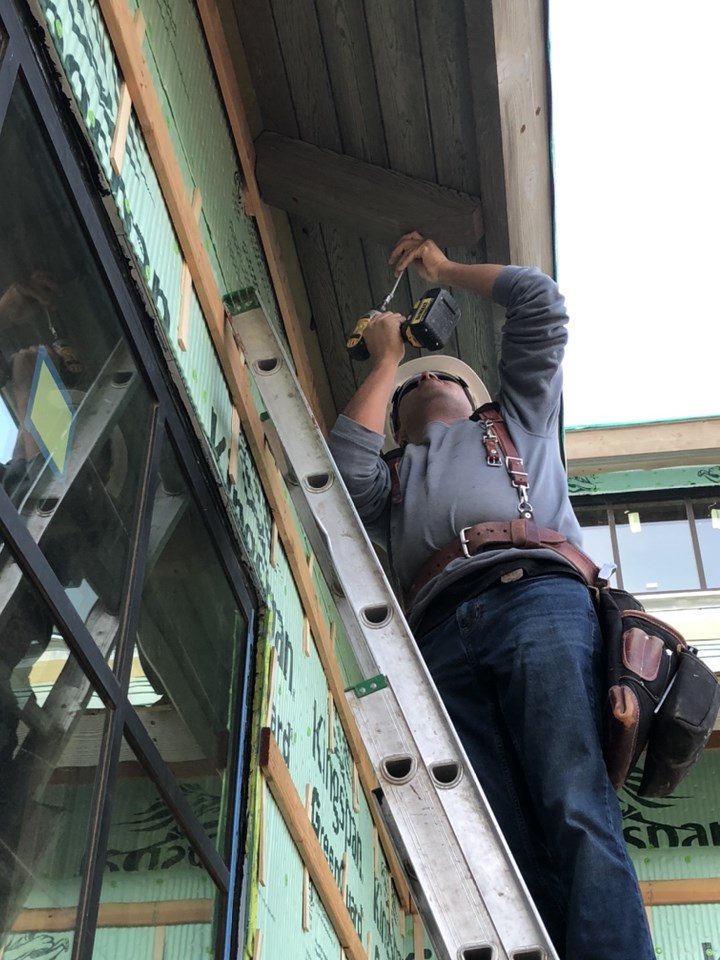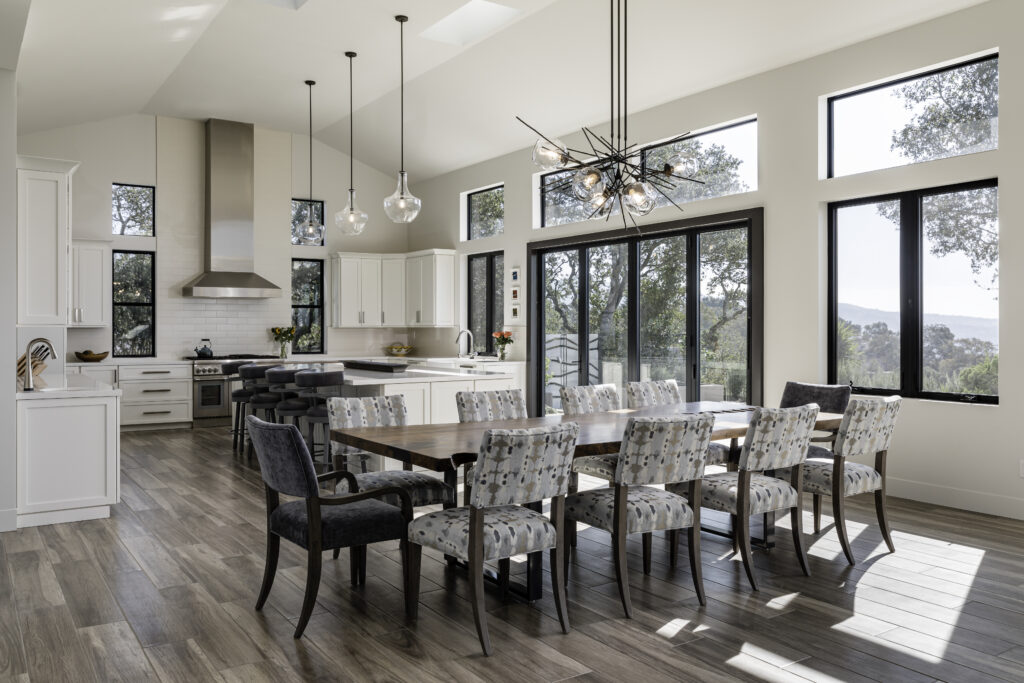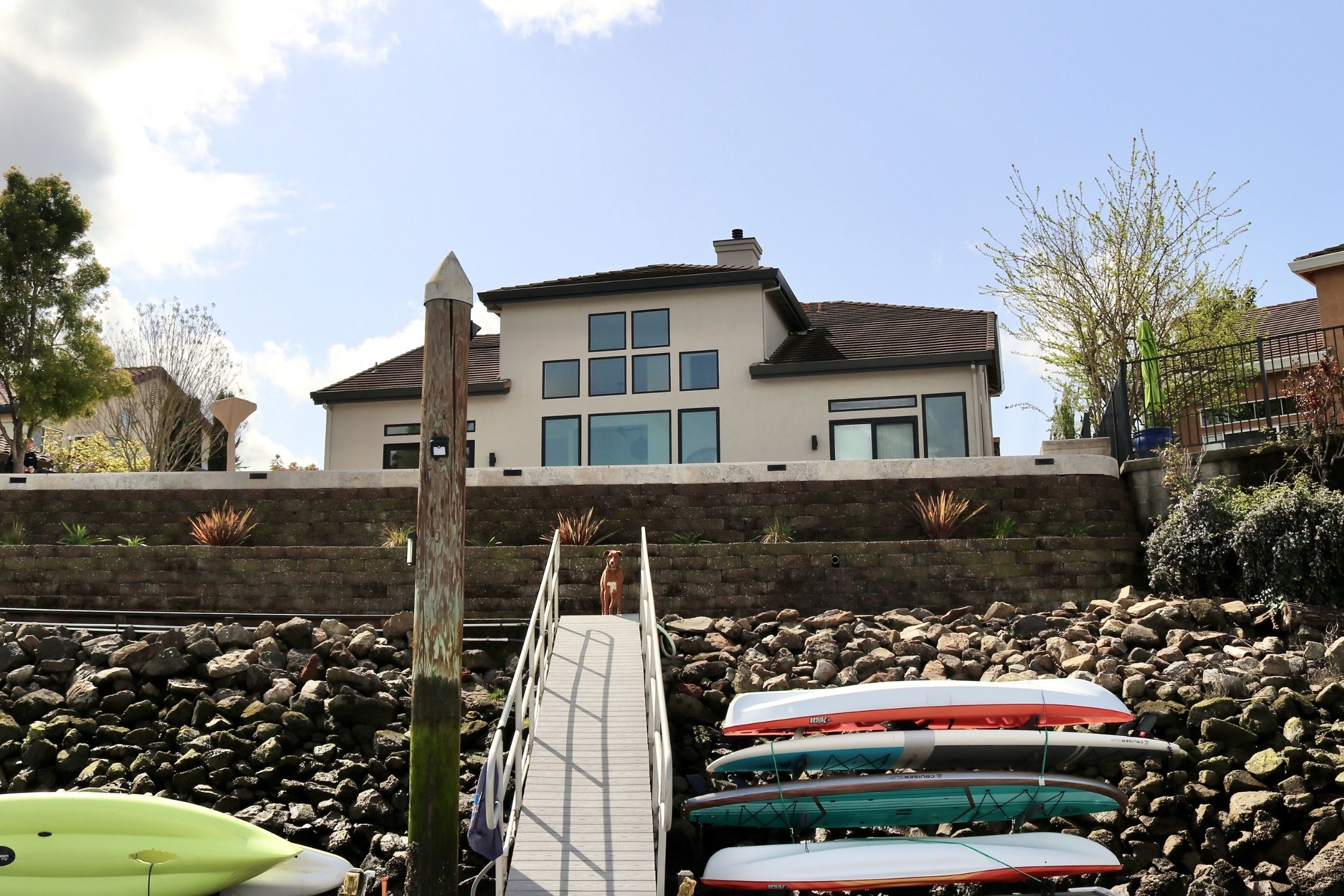Custom Home Construction Cost Per Square Foot

Building a custom home is a dream for many. Therefore, understanding the custom home construction cost per square foot can go a long way. However, nuances of a project can be complex. The price per square foot can vary widely, influenced by a multitude of factors.
This article aims to shed light on these costs. We’ll delve into the various elements that can impact the price per square foot of a custom-built home.
From the choice of materials to the complexity of the design, many aspects can affect the final cost. Even the location of your future home can significantly influence the price.
We’ll also explore how to budget for your custom home. Proper planning can help you manage costs and avoid unpleasant surprises.
By the end of this guide, you’ll have a clearer understanding of what to expect financially when embarking on a custom home construction project.
So, whether you’re a potential homeowner or a real estate investor, this comprehensive guide will provide valuable insights into the custom home cost per sq ft. Let’s dive in.
Firstly, Understanding Custom Home Construction Cost Per Square Foot
Custom home construction costs are determined by many factors. For example, each decision impacts the overall cost and the cost per square foot.
Crafting a home involves more than just bricks and mortar. So a custom home requires a deep understanding of specific pricing elements.
Several things come into play. Factors like location, materials, and design complexity significantly sway costs.
A detailed list of costs helps manage expectations. Therefore, setting out what contributes to the total cost can aid in planning and budgeting.
Different homes have different needs. Below are key elements you should consider when estimating costs:
- Location and regional variations
- Materials and design complexity
- Labor costs and availability
- Site preparation and foundation work
- Framing and exterior finishes
- Plumbing, electrical, and HVAC systems
Knowing these aspects can aid in crafting a well-rounded budget and keeping surprise expenses at bay.

The Basics of Custom Home Pricing
Firstly, the price of a custom home is a reflection of its uniqueness. Custom-built homes typically have a higher cost per square foot compared to standard homes.
Secondly, consider the elements involved in the construction. From land preparation to the final finishes, every step has a cost.
Thirdly, the size and quality of the home can also sway the price per square foot. Larger homes often feature lower overall costs per square foot due to scale benefits.
Finally, custom homes often focus on quality and specific preferences. This focus can translate to higher costs regardless of size.

Factors Influencing Custom Home Construction Cost Per Square Foot
Many variables influence custom home costs. So then, each factor is critical to determining the overall budget.
Location and Regional Variations
Where you decide to build plays a pivotal role. For example, urban areas tend to drive costs higher due to demand and limited space.
In contrast, rural areas can offer lower land costs but may incur additional expenses for utilities. It’s vital to consider these variations.
Location impacts not only land costs but also labor availability. Building in a high-demand area may translate to increased wages due to competition.
Check out our post on choosing the right location for your custom home.
Materials and Design Complexity
Materials can greatly affect the pricing. The choice between standard and premium materials reflects significantly on the cost.
Design complexity also plays a crucial role. Intricate designs require specialized skills, leading to increased labor costs.
Every unique design aspect, from complex rooflines to custom finishes, adds layers to the budget. So then, ensuring these align with your financial plan is essential.
Labor Costs and Availability
Labor markets are as diverse as they are dynamic. Skilled labor might be limited in certain regions, pushing costs higher. For example, in Northern California (where CRC Builders is located), the labor costs are extremely high and amount for a large portion of the budget for every custom home we build.
It’s also key to consider the timing. Seasonal demand often impacts labor costs. Starting your build during off-peak times can offer potential savings. However, building during the rainy season does present challenges.
Cost Breakdown by Home Construction Phases
Breaking down the construction phases helps manage the financial impact. Each phase has specific requirements and associated costs.
Understanding these phases can help you plan efficiently. Here is a breakdown of key construction phases:
- Site preparation and foundation: Clearing the land and building a strong foundation.
- Framing and exterior finishes: Creating the home’s structure and adding siding.
- Major systems: Installing critical systems like plumbing, electrical, and HVAC.
Each phase has unique requirements. Budgeting accurately depends on understanding these necessities.
Site Preparation and Foundation
Preparing your site involves more than meets the eye. Clearing land and addressing any obstacles can add to initial costs.
Laying a firm foundation sets the tone for the entire project. Quality work here helps avoid future costly repairs.
Framing and Exterior Finishes
Framing constructs the skeleton of your home. It’s essential to use quality materials to ensure durability.
Exterior finishes give your home a unique look. Whether you choose brick, stucco, or siding, this choice affects both aesthetics and budget.
Major Systems: Plumbing, Electrical, and HVAC
These systems are the lifeblood of a home. Installing them requires precision and compliance with local codes.
Each system has its cost dimension. Depending on the complexity and technology used, these can significantly impact your budget.

Interior Finishes and Custom Features
Interior finishes transform a structure into a home. These choices reflect your personal style and affect the cost per square foot.
High-end finishes like custom woodwork or premium appliances can add layers to your budget. It’s crucial to balance desire with affordability.
Kitchens and Bathrooms
These spaces often command the highest costs due to fixtures and fittings. Custom kitchens and luxury bathrooms can become significant financial elements.
Choosing between standard and premium options affects the bottom line. Budget constraints might dictate fewer luxury items.
Flooring, Cabinetry, and Countertops
These elements often embody the elegance and style of your home. Choices range from budget-friendly laminates to luxury hardwoods and stones.
Cabinetry and custom countertops offer various options. Custom designs provide unique appeal but might stretch a budget. Planning these investments wisely can result in a beautiful, cost-effective finish.

Budgeting for Your Custom Home
Budgeting effectively is key to successfully building a custom home. It involves more than just compiling numbers. A well-considered budget ensures that all elements of your dream home are achievable within your financial means.
Constructing a custom home requires foresight. Prepare to accommodate costs for both expected and unforeseen expenses. A clear understanding of financial responsibilities prevents surprises.
There are several essential components to an effective budget:
- First, assessing initial land and construction expenses
- Second, accounting for materials and labor
- Third, including permit and inspection fees
- Fourth, setting aside a contingency fund
- Fifth, planning for finishing touches and landscaping
Each component plays a pivotal role. This list keeps you focused on the bigger picture, reducing the risk of overspending.
Engaging with professionals, such as financial advisors and home builders, adds value. They offer insights and help adjust your budget to reflect current market conditions.
The Role of Budget in Custom Home Construction
Budgeting forms the cornerstone of a successful home-building project. It provides the financial framework for realizing your vision.
A budget acts as a roadmap, guiding decision-making from start to finish. With a structured financial plan, you can prioritize spending, ensuring that each dollar is allocated effectively.
The power of a solid budget is in its ability to balance dreams with reality. It ensures that while aiming high, you remain grounded.
How to Create a Realistic Budget
Creating a realistic budget begins with researching costs. Understand average costs for custom homes in your desired location. Factor in regional variations.
Next, outline all major expenses. Begin with land acquisition and then move through construction phases. Each aspect requires its own budget allocation.
Engage experts to refine your budget. Builders and financial planners provide estimates and guidance. Their input helps anticipate costs and account for variables.
Finally, remain flexible and prepared for adjustments. As construction progresses, some costs may change. Regular review and communication with your builder ensure you stay on track.

Managing Costs and Expectations
Managing costs effectively is vital for a successful custom home build. Balancing dreams with realistic budgeting prevents future financial strain. Therefore, it requires a proactive approach throughout the project.
Understanding the variability in construction costs is key. Prices can fluctuate due to material shortages or labor availability. Staying informed on market trends helps anticipate changes.
Communication with your builder is essential. Regular updates ensure everyone is on the same page. This cooperation can prevent misunderstandings and costly delays.
Consider these strategies for managing costs:
- Utilize construction management software for tracking expenses.
- Review bids thoroughly to understand cost scope.
- Set clear expectations with your builder and vendors.
- Adjust plans if budget constraints arise.
By focusing on these practices, you can mitigate risks of overspending. A managed approach keeps the project aligned with your financial goals.

The Importance of a Contingency Fund
A contingency fund is an essential safety net for custom home construction. It provides a financial buffer for unexpected expenses.
Unforeseen costs can arise from many sources, such as weather delays or design changes. A contingency fund helps you absorb these costs without derailing your budget. Allocate around 10-15% of the total project cost for contingencies. This proactive step ensures financial flexibility and peace of mind throughout the building process.
Tips for Keeping Construction Costs Down
Efficiency in managing costs begins with thoughtful planning. Opt for designs that balance aesthetics with functionality to minimize expenses.
Choose materials wisely. Look for alternatives that offer quality at lower costs. Local sourcing can reduce transportation fees.
Timing can also play a crucial role. Building during off-peak seasons could result in lower labor rates. Also, stay open to suggestions from experienced builders. Their expertise can often identify cost-saving opportunities without sacrificing quality or design.

Conclusion: Maximizing Value in Custom Home Construction
Building a custom home is both a financial and personal investment. The key to maximizing this investment lies in smart planning and decision-making. By prioritizing needs and understanding the cost implications, homeowners can create a home that offers both comfort and value.
Attention to quality is crucial. Long-term savings often come from the durability and efficiency of chosen materials and systems. Collaborating with skilled professionals ensures that each decision supports the home’s enduring value. Thoughtful execution of plans helps achieve the perfect balance between initial cost and lasting worth.
Final Thoughts on Custom Home Construction Costs
Custom home construction involves navigating a complex array of choices and costs. As such, having a clear understanding of potential expenditures and maintaining an adaptable approach is essential. Every element, from design to final finishes, impacts the overall budget.
Successful custom home projects benefit from meticulous planning and expert guidance. Regular communication with all parties involved helps keep the project aligned with budgetary expectations. Ultimately, by fostering a collaborative and informed process, homeowners can transform their vision into reality while maintaining control over costs. This careful management is the key to creating a dream home that meets both personal desires and financial capabilities.

FAQs About Custom Home Construction Costs
How does the location impact custom home costs?
The location of your custom home plays a significant role in determining costs. Different regions have varying labor rates and material availability. Additionally, local regulations and building codes can influence expenses. It’s crucial to research regional cost variations when planning your budget.
What factors most affect the custom home price per square foot?
Several factors impact the price per square foot for custom homes. Design complexity, materials, and labor costs are significant contributors. High-end finishes and unique architectural details can also increase costs. Understanding these factors helps in making informed decisions about your budget.
Can energy-efficient features reduce costs in the long run?
Yes, incorporating energy-efficient features can lead to long-term savings. While the initial installation costs may be higher, these features lower utility expenses over time. Options like smart home systems and efficient HVAC units can enhance both value and sustainability.
Why is it essential to have a contingency budget?
A contingency budget prepares you for unexpected expenses during construction. Unforeseen issues, like weather delays or material shortages, can arise. Allocating extra funds helps cushion these surprises, keeping the project on track without financial strain. Planning for the unexpected ensures smoother execution.
Did you enjoy this article? Check out our other articles like what is a general contractor, how to build a home that is protected from wildfire, engineered vs natural stone countertops, and the number one thing your Contractor must have to build your home. Also check out: Should you build a custom home or buy a spec home?

